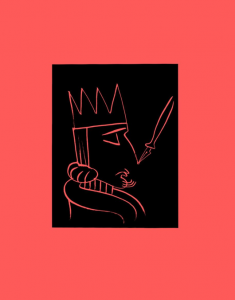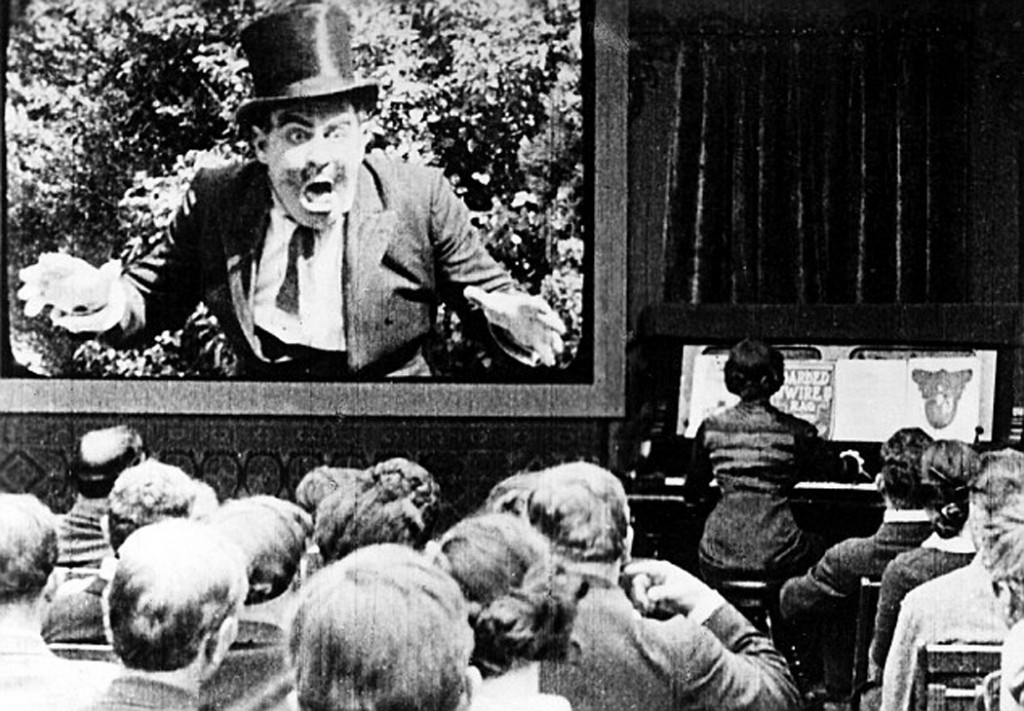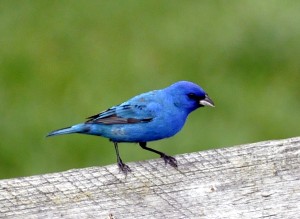 As a little kid in the early 1960s, I guess I decided that the hooded sweaters I sometimes wore made me look like Dino the dinosaur — you know, from “The Flintstones”? I don’t think we had a specific name for them yet — at least we didn’t call them “hoodies,” as people do now. Instead, opting for brutal descriptivism (which sounds like a 1960s architectural movement), I’m guessing that we just uncreatively called them “hooded sweaters.” Continue reading “Denaturalizing the Natural”
As a little kid in the early 1960s, I guess I decided that the hooded sweaters I sometimes wore made me look like Dino the dinosaur — you know, from “The Flintstones”? I don’t think we had a specific name for them yet — at least we didn’t call them “hoodies,” as people do now. Instead, opting for brutal descriptivism (which sounds like a 1960s architectural movement), I’m guessing that we just uncreatively called them “hooded sweaters.” Continue reading “Denaturalizing the Natural”
An Apology for Etymology
 I was asked a question at a recent presentation I did up at the University of Chicago, concerning why the etymology of technical terms is a focus in an intro book that I wrote (and which I use in my own 100-level classes). Given my persistent critique of quests for origins it seems odd, or so the question might go, to focus on the origins of words, no?
I was asked a question at a recent presentation I did up at the University of Chicago, concerning why the etymology of technical terms is a focus in an intro book that I wrote (and which I use in my own 100-level classes). Given my persistent critique of quests for origins it seems odd, or so the question might go, to focus on the origins of words, no?
etymology (n.)
late 14c., ethimolegia “facts of the origin and development of a word,” from Old French etimologie, ethimologie (14c., Modern French étymologie), from Latin etymologia, from Greek etymologia “analysis of a word to find its true origin”
Good point. Why do I talk about etymologies in that book? Continue reading “An Apology for Etymology”
Creating History

This is the second of two posts from the Edge on what is currently happening in Baltimore…
History-making involves the creation of connections between events that generate meaning and order. It is really the same as any storytelling, where the creator of the (hi)story decides what characters, actions, and elements fit together to construct a meaningful narrative. These storytellers, whether historians, journalists, or novelists, have significant power to construct the narrative of events in ways that reinforce preferred ideologies, assumptions, and stereotypes. Continue reading “Creating History”
Fabricating Origins
 We used a typescript copy of my small, forthcoming edited volume, Fabricating Origins (due out this summer), in my upper-level seminar this semester, a course devoted to examining origins narratives — seeing those various sorts of “In the beginning” tales we so commonly tell as not being about the past their tellers claim to narrate but all about the present and future hopes of the tale’s narrator. The course started out with Barry Levinson’s endearing film “Avalon” (but one that opens the way to discussing hidden fractures in the life of any social group) and then a couple weeks later we watched Woody Allen’s “Midnight in Paris” (in which the notion of nostalgia is problematized so nicely) — both setting the tone for the course. Students kept notebooks in the class (something I learned from Jonathan Z. Smith and which I’ve incorporated into most of my upper-level seminars), and they handed them into me last week; it was interesting to see, from some of their notes, how effective the films were in framing the problem of the course. And then, eventually, we worked our way to the ten revised posts from this site, collected together in the above-named volume, complete with commentaries on each by a group of young scholars I’ve mostly met online through social media. And, like the movies, the volume seems to have worked well with students, to press home the point of the course.
We used a typescript copy of my small, forthcoming edited volume, Fabricating Origins (due out this summer), in my upper-level seminar this semester, a course devoted to examining origins narratives — seeing those various sorts of “In the beginning” tales we so commonly tell as not being about the past their tellers claim to narrate but all about the present and future hopes of the tale’s narrator. The course started out with Barry Levinson’s endearing film “Avalon” (but one that opens the way to discussing hidden fractures in the life of any social group) and then a couple weeks later we watched Woody Allen’s “Midnight in Paris” (in which the notion of nostalgia is problematized so nicely) — both setting the tone for the course. Students kept notebooks in the class (something I learned from Jonathan Z. Smith and which I’ve incorporated into most of my upper-level seminars), and they handed them into me last week; it was interesting to see, from some of their notes, how effective the films were in framing the problem of the course. And then, eventually, we worked our way to the ten revised posts from this site, collected together in the above-named volume, complete with commentaries on each by a group of young scholars I’ve mostly met online through social media. And, like the movies, the volume seems to have worked well with students, to press home the point of the course.
And that point was…?
Don’t look in the distance, or the past, at whatever someone is gesturing toward; rather, keep your eyes on the one trying to direct, perhaps even to force, your gaze. Continue reading “Fabricating Origins”
Context Matters (Sometimes)
 So many articles have already been written on the awful events that transpired in Paris this past week — articles flying fast and furious around Facebook, including my own wall — that there didn’t seem much to be added by penning yet another post here at the Edge. Continue reading “Context Matters (Sometimes)”
So many articles have already been written on the awful events that transpired in Paris this past week — articles flying fast and furious around Facebook, including my own wall — that there didn’t seem much to be added by penning yet another post here at the Edge. Continue reading “Context Matters (Sometimes)”
Going to the Talkies?
 “Going to the movies over the winter break?” is a common enough question this time of year, but the curious thing is that if we asked:
“Going to the movies over the winter break?” is a common enough question this time of year, but the curious thing is that if we asked:
“Going to the talkies over the winter break?”
Why, When I was a Kid…
 The other day I was cruising around the web reading old New York Times pieces and came across one entitled “Does Religion Oppress Women.” As with many things on the web (e.g., the banana slicer for sale at amazom.com), the comments section is the best part. For example:
The other day I was cruising around the web reading old New York Times pieces and came across one entitled “Does Religion Oppress Women.” As with many things on the web (e.g., the banana slicer for sale at amazom.com), the comments section is the best part. For example:
 kaybee’s comment stood out for me because it nicely represents a commonplace strategy — a strategy at home within the academy no less than in comments on the web — of positing a pristine originary moment that, once expressed or shared, is only later corrupted and polluted. It’s a model not unlike the telephone game (problematically known as “Chinese whispers” earlier on), which judges the contemporary against the pure source, and one that we find in the U.S. supreme court (when a justices measure current behaviors by the standard of what the writers of the Constitution intended) as well as in the study of etymology itself (whose own etymology denotes studying the true meaning of a word). Continue reading “Why, When I was a Kid…”
kaybee’s comment stood out for me because it nicely represents a commonplace strategy — a strategy at home within the academy no less than in comments on the web — of positing a pristine originary moment that, once expressed or shared, is only later corrupted and polluted. It’s a model not unlike the telephone game (problematically known as “Chinese whispers” earlier on), which judges the contemporary against the pure source, and one that we find in the U.S. supreme court (when a justices measure current behaviors by the standard of what the writers of the Constitution intended) as well as in the study of etymology itself (whose own etymology denotes studying the true meaning of a word). Continue reading “Why, When I was a Kid…”
Meanwhile, Back at the Trout Farm…

“Entire place used to be a trout farm. Seems like most everything used to be something else, doesn’t it?”
– Yevgeny Nourish, in “eXistenZ” (1999)
Filters, Filters Everywhere
 My family is a family of identifiers. Whether it is a bird, tree, or salamander, we are often dissatisfied until we know which species it is. Thus we have binoculars and a whole shelf of Field Guides for identifying much of the flora and fauna. While others can certainly dissect the psychological interests behind the desire to know these names, the process of observation intrigues me. Continue reading “Filters, Filters Everywhere”
My family is a family of identifiers. Whether it is a bird, tree, or salamander, we are often dissatisfied until we know which species it is. Thus we have binoculars and a whole shelf of Field Guides for identifying much of the flora and fauna. While others can certainly dissect the psychological interests behind the desire to know these names, the process of observation intrigues me. Continue reading “Filters, Filters Everywhere”
Whose (and Who) Rules?

Gains in Iraq, over the past several weeks, made by members of the Islamic State of Iraq and Syria (ISIS) have resulted in some news stories concerning their desecration and/or destruction of a variety of historic artifacts (click the above graphic for one example or here or even here and here for the latest). These stories bring to mind the outrage in the media in Europe and North America over the Taliban destroying the large statues of the Buddha carved into the mountains of the Bamiyan province of central Afghanistan, back in March of 2001 (see the below before/after photo, or click the image below for more information).

